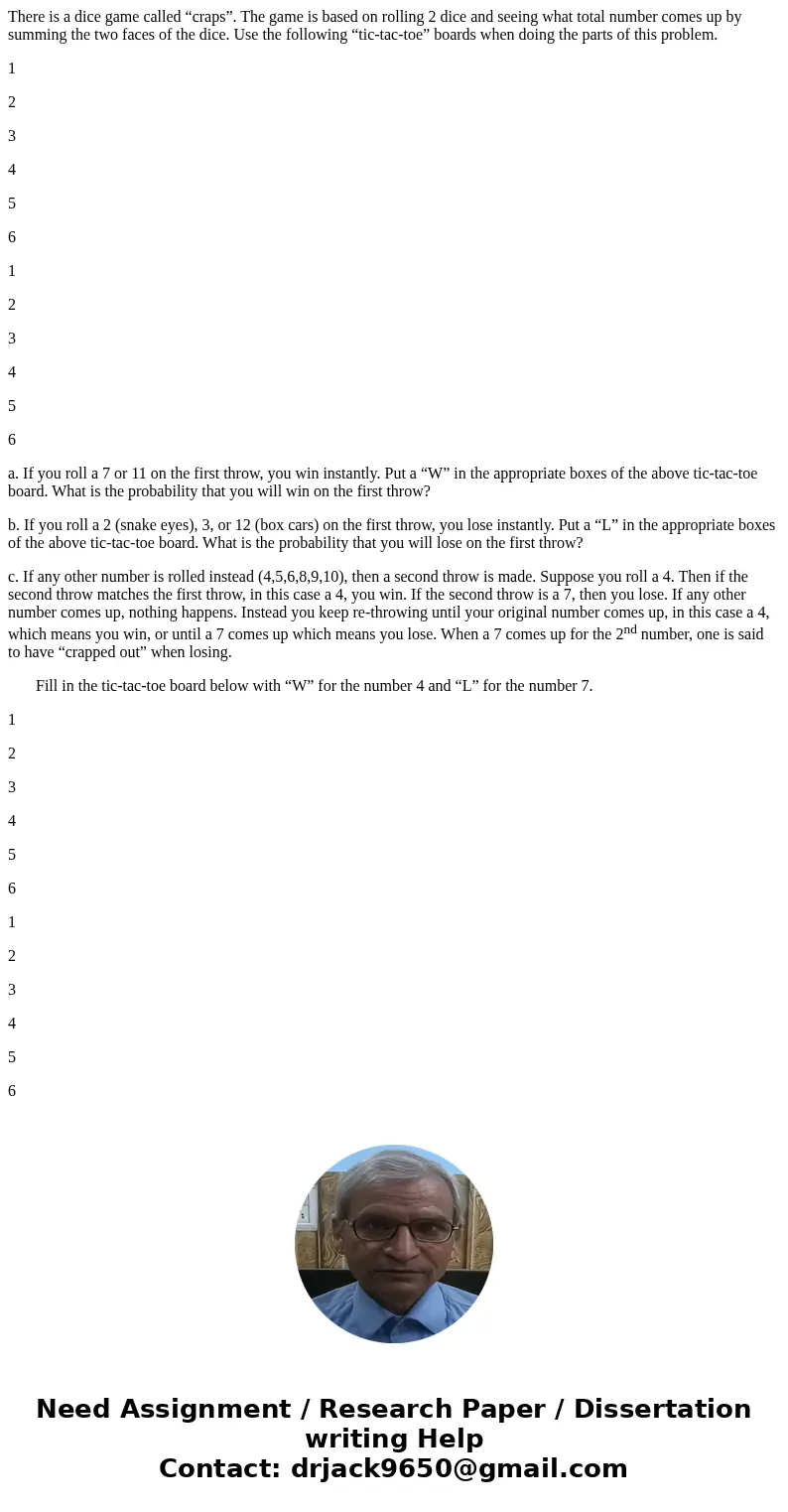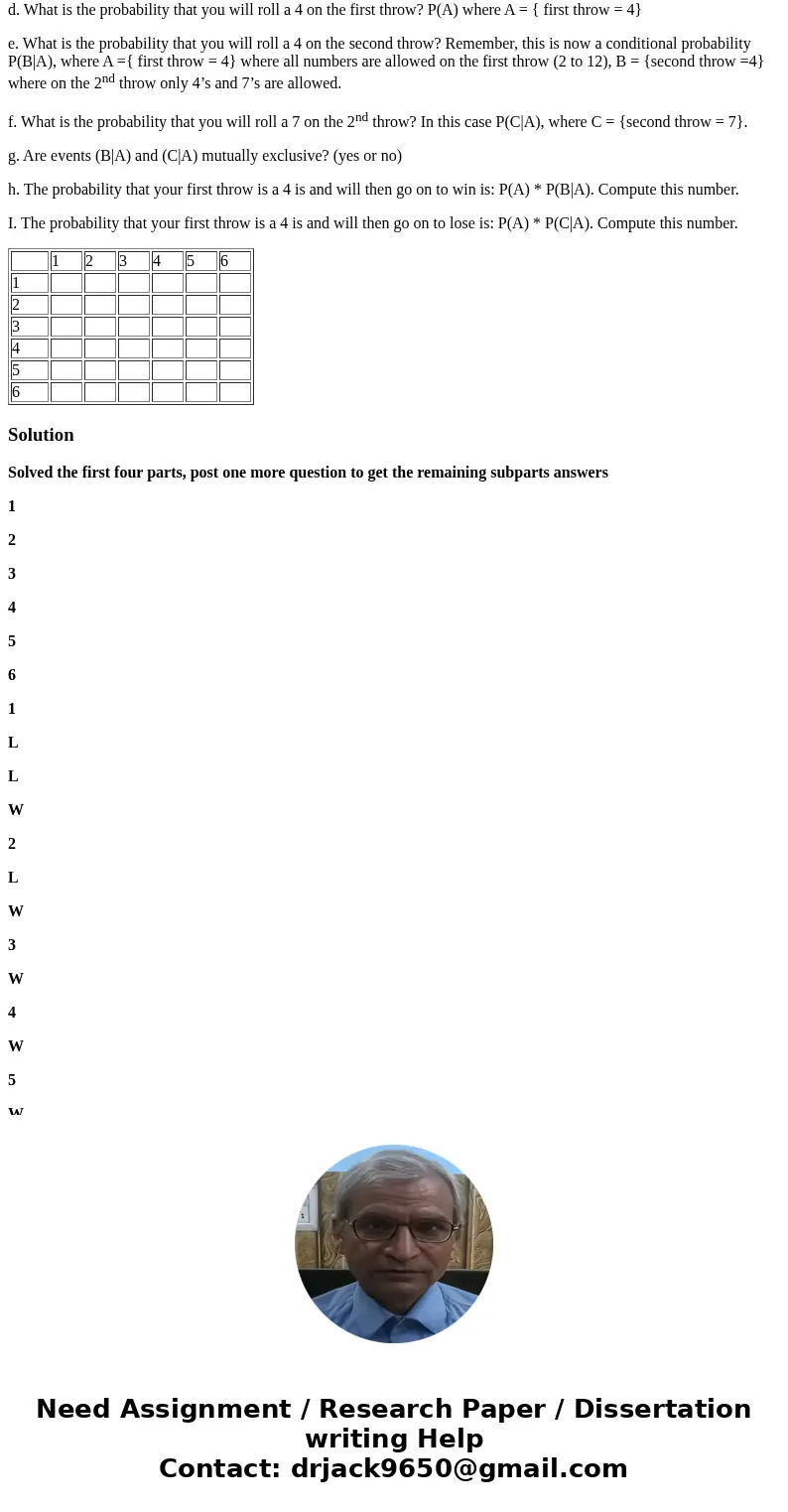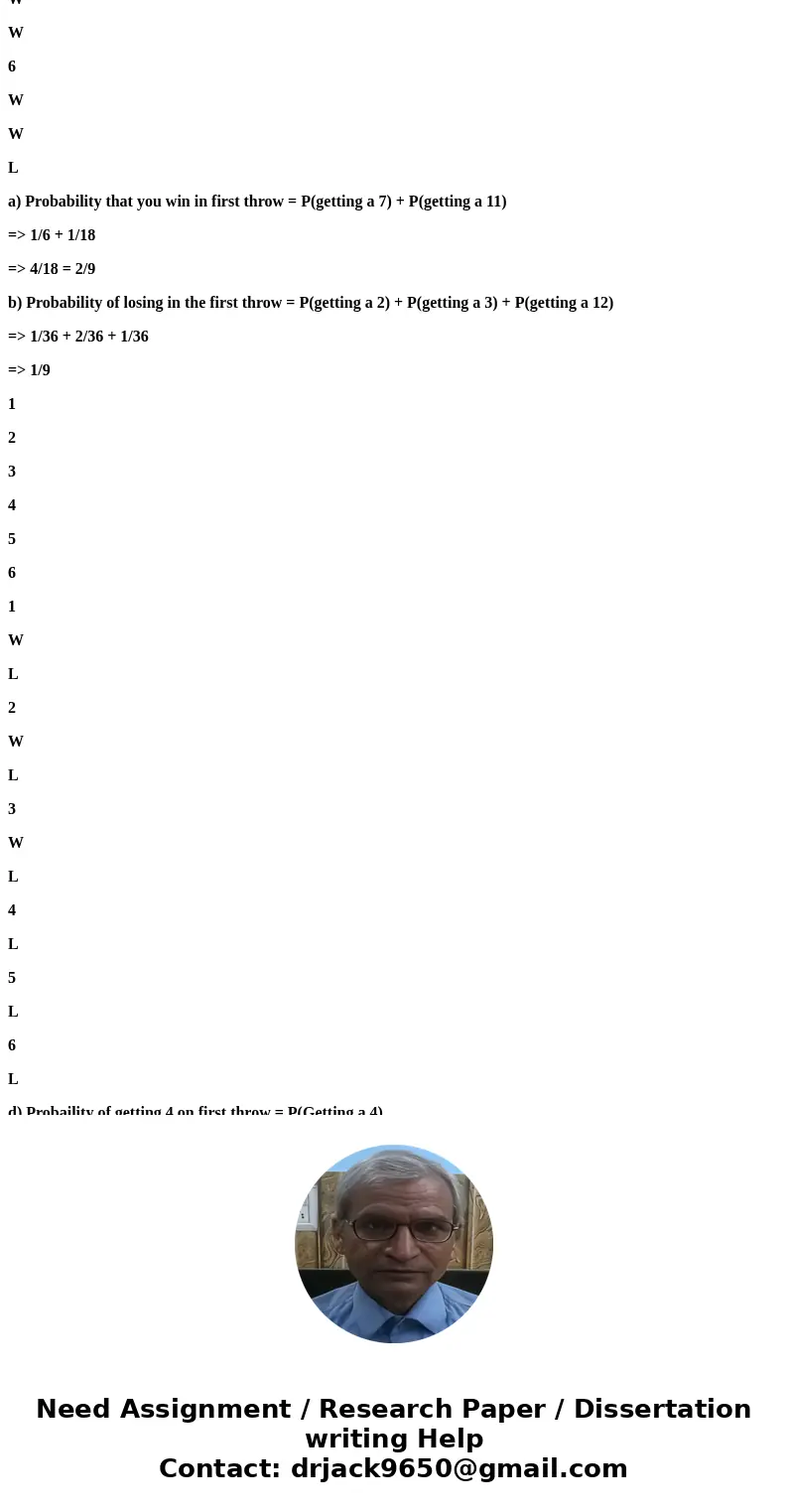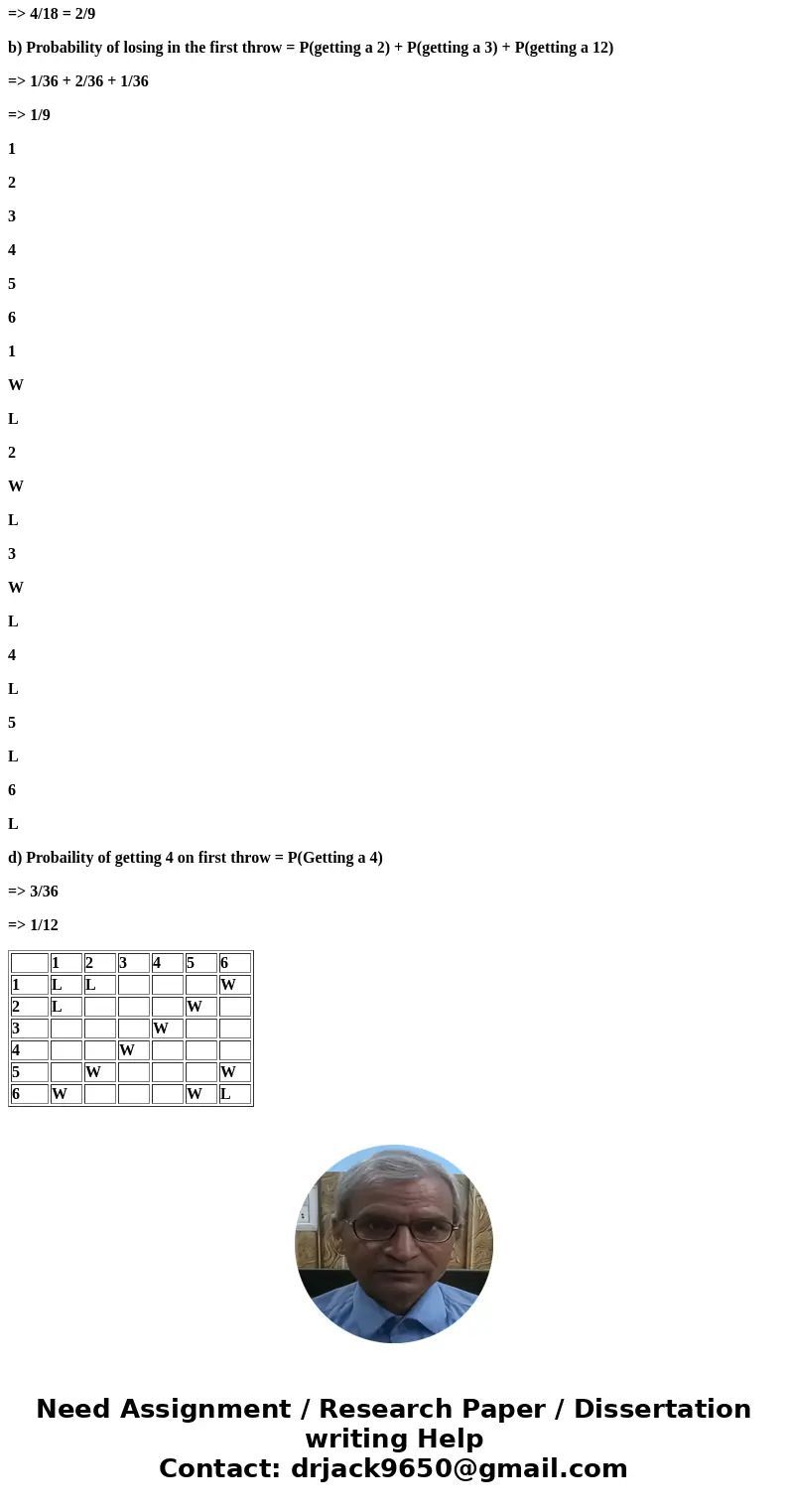There is a dice game called craps The game is based on rolli
There is a dice game called “craps”. The game is based on rolling 2 dice and seeing what total number comes up by summing the two faces of the dice. Use the following “tic-tac-toe” boards when doing the parts of this problem.
1
2
3
4
5
6
1
2
3
4
5
6
a. If you roll a 7 or 11 on the first throw, you win instantly. Put a “W” in the appropriate boxes of the above tic-tac-toe board. What is the probability that you will win on the first throw?
b. If you roll a 2 (snake eyes), 3, or 12 (box cars) on the first throw, you lose instantly. Put a “L” in the appropriate boxes of the above tic-tac-toe board. What is the probability that you will lose on the first throw?
c. If any other number is rolled instead (4,5,6,8,9,10), then a second throw is made. Suppose you roll a 4. Then if the second throw matches the first throw, in this case a 4, you win. If the second throw is a 7, then you lose. If any other number comes up, nothing happens. Instead you keep re-throwing until your original number comes up, in this case a 4, which means you win, or until a 7 comes up which means you lose. When a 7 comes up for the 2nd number, one is said to have “crapped out” when losing.
Fill in the tic-tac-toe board below with “W” for the number 4 and “L” for the number 7.
1
2
3
4
5
6
1
2
3
4
5
6
d. What is the probability that you will roll a 4 on the first throw? P(A) where A = { first throw = 4}
e. What is the probability that you will roll a 4 on the second throw? Remember, this is now a conditional probability P(B|A), where A ={ first throw = 4} where all numbers are allowed on the first throw (2 to 12), B = {second throw =4} where on the 2nd throw only 4’s and 7’s are allowed.
f. What is the probability that you will roll a 7 on the 2nd throw? In this case P(C|A), where C = {second throw = 7}.
g. Are events (B|A) and (C|A) mutually exclusive? (yes or no)
h. The probability that your first throw is a 4 is and will then go on to win is: P(A) * P(B|A). Compute this number.
I. The probability that your first throw is a 4 is and will then go on to lose is: P(A) * P(C|A). Compute this number.
| 1 | 2 | 3 | 4 | 5 | 6 | |
| 1 | ||||||
| 2 | ||||||
| 3 | ||||||
| 4 | ||||||
| 5 | ||||||
| 6 |
Solution
Solved the first four parts, post one more question to get the remaining subparts answers
1
2
3
4
5
6
1
L
L
W
2
L
W
3
W
4
W
5
W
W
6
W
W
L
a) Probability that you win in first throw = P(getting a 7) + P(getting a 11)
=> 1/6 + 1/18
=> 4/18 = 2/9
b) Probability of losing in the first throw = P(getting a 2) + P(getting a 3) + P(getting a 12)
=> 1/36 + 2/36 + 1/36
=> 1/9
1
2
3
4
5
6
1
W
L
2
W
L
3
W
L
4
L
5
L
6
L
d) Probaility of getting 4 on first throw = P(Getting a 4)
=> 3/36
=> 1/12
| 1 | 2 | 3 | 4 | 5 | 6 | |
| 1 | L | L | W | |||
| 2 | L | W | ||||
| 3 | W | |||||
| 4 | W | |||||
| 5 | W | W | ||||
| 6 | W | W | L |




 Homework Sourse
Homework Sourse